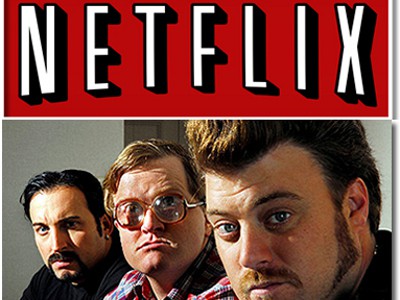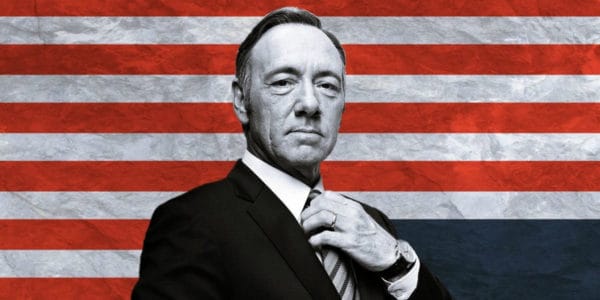

The cost for Netflix is about $10 a month.
That’s less than a gym membership or your landline, if you still have one. It’s less than the average person spends on liquor, cigarettes and gasoline every week. It doesn’t require a prescription. And it’s far less costly than vices like illegal or legal drugs.
Why, you ask, do I mention liquor, cigarettes and gasoline? Because those are among the consumer items that are the most highly “inelastic”. Economists describe these goods as subject to Ramsey Pricing, which means you can increase the price (almost) indiscriminately without demand falling. You cannot do without these items so you continue to consume them even when the price is increased. That is also why they are the most heavily taxed items in the Consumer Price Index.
If you haven’t guessed what I am talking about yet, let me end the suspense: it’s Netflix, of course. Firmly and certainly the second to last monthly cost almost every western consumer is willing to cut when their income declines. The first: an internet connection itself.

Where did this electronic drug come from? And why aren’t there any alternatives? Well, Facebook used to be almost as addictive, but Netflix has become far more entertaining. Orange Is The New Black and original content is the new crack. Well, not exactly. But how did you feel after the final episode of Stranger Things or the season ending installment of House of Cards if you were watching it as it was being delivered? You wanted more and wanted it immediately.
Netflix has revolutionized the delivery of television, or, more precisely, entertainment. When my octogenarian parents admit they are guilty of binge watching a Netflix original series, or even just some great BBC series that is only available on Netflix, you know something has changed.
Binge watching was invented by Reed Hastings, CEO of Netflix. Why? Because it differentiated his service over traditional television. But that is not the only unique feature. Netflix has original content, and exclusive content, that has proven to be so compelling it has driven new subscriptions in the tens of millions worldwide. And at about $10 per month, who can resist?
Original content is nothing new. HBO, Showtime and of course the original “over the air” TV networks have been creating original content since the first commercial radio broadcasts were paid for with advertising.
But Netflix has several advantages.
It all started with a monthly DVD subscription service. For about $20 a month Netflix would send you three DVDs. You checked them out like library books and kept them as long as you liked. While the catalogue was initially only second run movies, it expanded as subscriptions increased. At that time, Netflix was no threat to the traditional broadcasting industry, but as the internet became ubiquitous and its bandwidth increased geometrically, Netflix launched a streaming service.

Cable networks and their competitors the telephone companies were trying to offer something similar but their approach was to store the movies and let you download them for viewing. Clunky and complicated, it was fraught with network issues, frozen screens and disappointed customers. And worse, the selection of content was limited. Netflix chose to stream the content putting the onus on the same Cable and Telephone Companies to improve their network capacity so their customers could get what they wanted. But those big telcos now had to provide the bandwidth for their competitor. They wanted to throttle the bandwidth so they could charge Netflix and other customers more and their own customers less. That battle is still in the courts but it doesn’t look good for those big cable and telephone companies. Let’s face it: judges watch Netflix just as much as the rest of us. And with addicted consumers as their advocates, Netflix has developed pricing power.
In the past few years Netflix has slowly and carefully raised prices. What was once $7.99/month is now a plan that permits only one simultaneous stream, the $9/month plan permits two streams and $12/month allows for four concurrent streams. It started in May 2014 when Netflix customers were informed that the monthly fee for the Standard streaming plan was set to increase from $8 to $9. Established customers were allowed to continue paying the $8 fee for two years, at which point Netflix would update all Standard subscriptions to the current rate. In October of 2015, Netflix again bumped their Standard streaming subscription up by a dollar, to $10. That two years has passed and although some longtime Netflix customers grumbled, the price increases have gone through, more have been added, and $7.99/month is gone forever with Netflix and its shareholders streaming all the way to the bank.
To maintain its ability to raise prices over time, Netflix must deliver ever more compelling content and so far it is doing exactly that. With the increased cash flow from higher prices across the entire network of subscribers, not to mention net new subscribers paying for the service, Netflix has been able to license great new content. But it is the original content we can only get at Netflix that is the most valuable. Shows like House of Cards and Orange is the New Black remain staples but Stranger Things, The Crown and so many more popular shows are cementing Netflix’s place as a primary source of television content.

In producing its own original content, Netflix is once again the disruptor. By allowing its subscribers to binge watch an entire season of a new show they had just produced, Netflix changed the TV landscape forever. It was certainly a risky strategy, but its success is delivering unexpected benefits. We are now seeing brand name actors, directors and producers gravitate to the Netflix platform which is resulting in even better original content and more power to the Netflix brand. These creative professionals also have more freedom on the Netflix platform. They don’t have to compromise the telling of their story by eliminating strong language, sexual content or disturbing scenes that might get a show bounced from a prime time slot on a national TV network. With Netflix’s size and diversity, it appears there is a big enough audience (or demographic) for almost anything.
That creative freedom has become a weapon Netflix is using against traditional television networks. Virtually every other television program we have seen, certainly anything successful, had to go through a process of being “pitched”, “green lighted” and then having a pilot shot. Only after that pilot episode gets good ratings do the producers then commit to a whole season or sometimes only a few more episodes, depending on the strength of the initial ratings. Many a TV show has been cancelled without even shooting a full first season. So when Netflix agreed to shoot the entire first season of House of Cards and not just a pilot it was unprecedented. It was also expensive and incredibly risky. If the show was a dud, it was going to be a multi-million dollar dud with no opportunity to cut costs after a few episodes. If this thing failed, Netflix would have punched a noticeable hole in its balance sheet.
Why did Netflix take that risk? In part, because it had to. It was a bit of a “come to Jesus” moment in one respect. Netflix had to show it was willing step up and pay for bigger productions if it wanted to be considered as a possible future purchaser of other big productions. But the real reason is its own creation of binge watching. Good, bad or ugly, the entire first season of House of Cards was going to be made available in one giant weekend-busting batch. If it was going to be a dud it was going to be an immediate dud. And at the time, Netflix was on a steep slope of increasing monthly subscribers so many people could get the first month for free, watch the entire season of Netflix’s headline show, House of Cards, and cancel their subscription without paying a dime. Reed Hastings gambled that those who came for House of Cards would stay for everything else. And he was right. But that binge watching mentality has fundamentally changed the way television content is and will be consumed forever. Now, every competing network has to offer something like it.
It is not the last time we will see the boundaries move and it may not always be Netflix that moves them, but with its now global footprint, addictive original content and enticingly low price point, Netflix is a global disruptor with an immediately recognizable brand and giant lead.
Take away my Starbucks caramel macchiato? No problem I will make a coffee at home. Take away my brand-name dish detergent? Hey, the store brand is fine. Take away my cable? It’s already gone. Take away my Netflix? Sorry, I’m binge watching Luke Cage. Come back later.
Leave a Reply
You must be logged in to post a comment.



 Share
Share Tweet
Tweet Share
Share




Comment